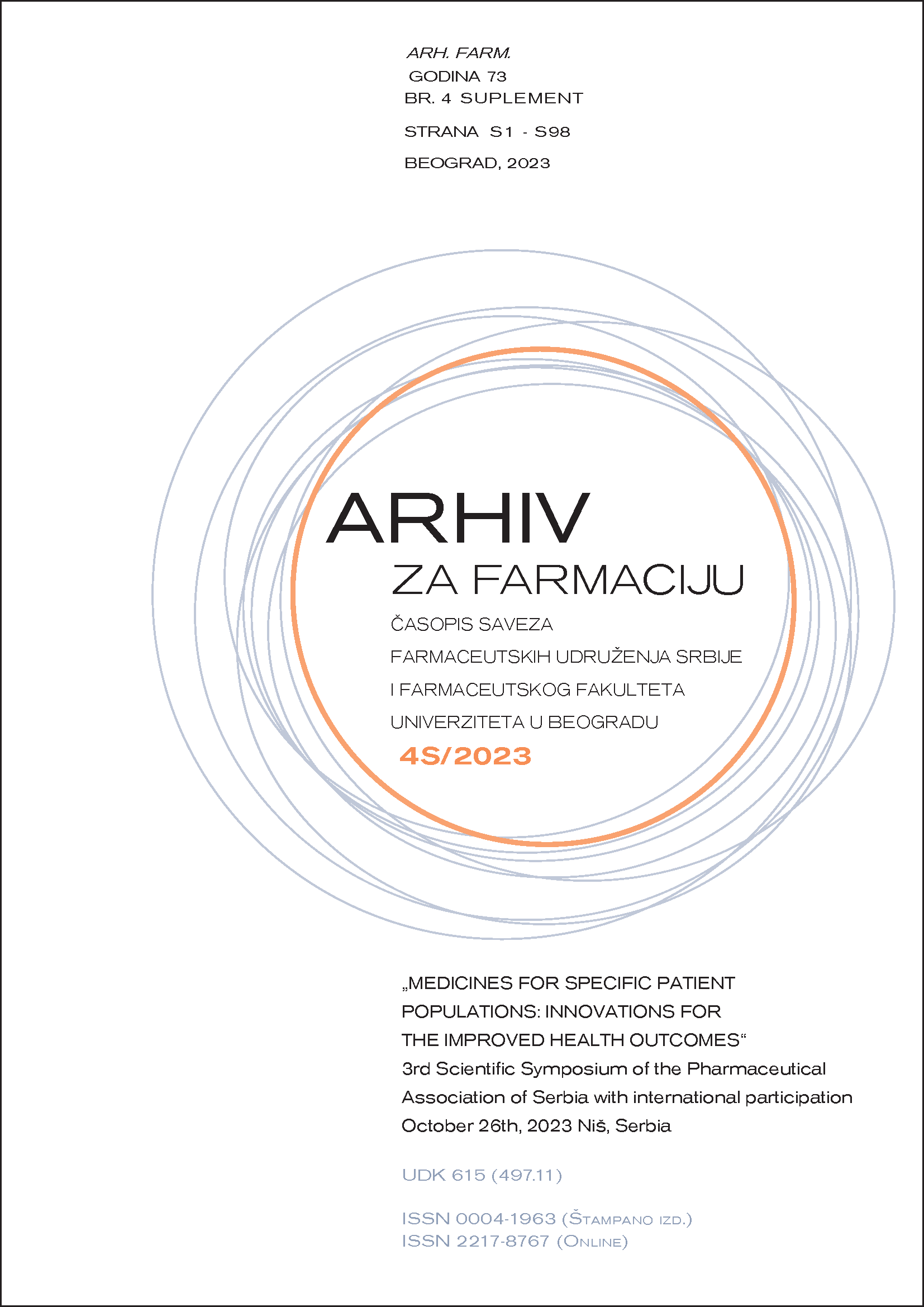
Editorial
Dear Colleagues,
This Supplement issue of the Archives of Pharmacy contains abstracts presented at the 3rd Scientific Symposium of the Pharmaceutical Association of Serbia with international participation entitled „Medicines for specific patient populations: Innovations for the improved health outcomes“.
Contemporary approaches towards the patient focused drug development emphasize that integration of patients’ perspective and their experience could improve the quality, relevance, safety and efficiency of drug development and inform regulatory decision making (ICH, 2021).
Pharmaceutical Association of Serbia addressed this emerging paradigm through scientific presentations and discussions during the 3rd Scientific Symposium „Medicines for specific patient populations: Innovations for the improved health outcomes“ which was held in the inspiring environment of the Science and Technology Park Niš on October, 26th 2023.
Aging population associated with increased number of comorbidities and the need for polypharmacy; lack of age-appropriate medicines for children and the need for dose adjustment; safety and efficacy issues related to drug administration in pregnancy, during breastfeeding, in patients with renal and hepatic insufficiency; personalized therapies and need for on demand preparation of medicines, as well as increasing concerns about the medication nonadherence represent some of the challenges for pharmaceutical research and development and therapy outcomes monitoring. It is expected that innovative therapies should benefit from the holistic insight in patient needs, thorough understanding of drug substance physicochemical and biopharmaceutical properties combined with the enabling formulation and manufacturing technologies. Recent developments in physiologically based pharmacokinetic (PBPK) modeling, including increasing number of ready for use models and user-friendly PBPK platforms further supports patient focused drug development, as well as integration of artificial intelligence in pharmaceutical research. In addition, pharmacometric models are an essential aspect of drug development and clinical practice in addressing variability in response to drug administration. Hence, they represent the cornerstone of drug dosage regimens individualization according to the patients’ needs.
We would like to express our sincere gratitude to all the authors for making the Symposium and this Supplement issue possible with their contributions and participation.
Scientific Board
